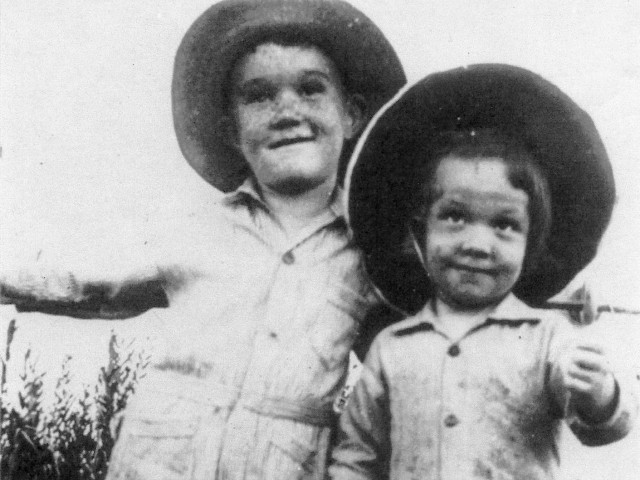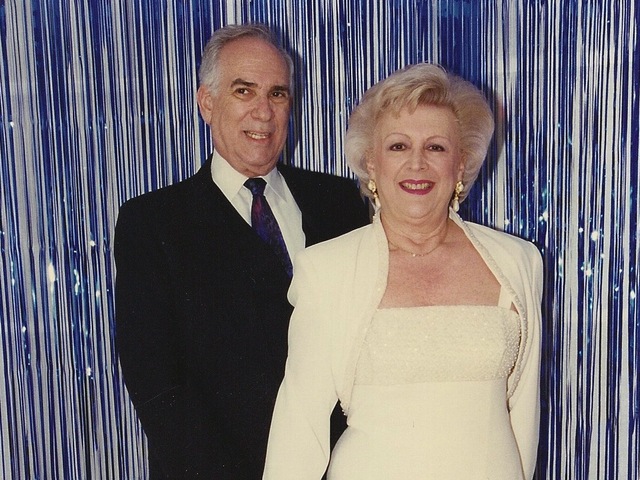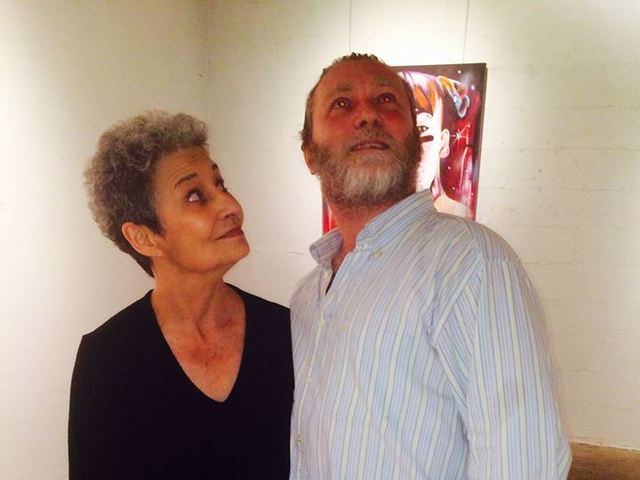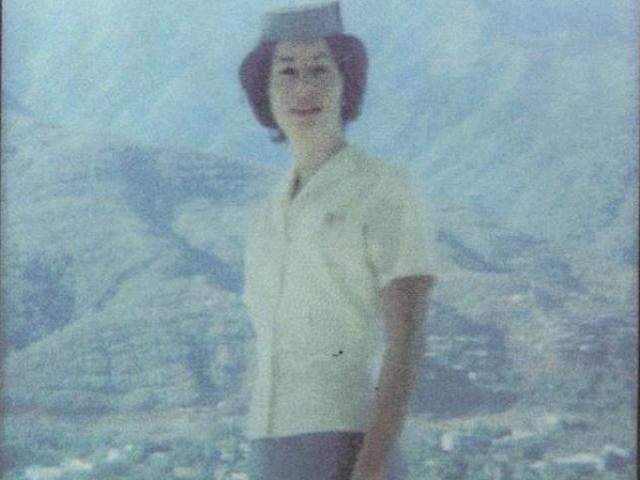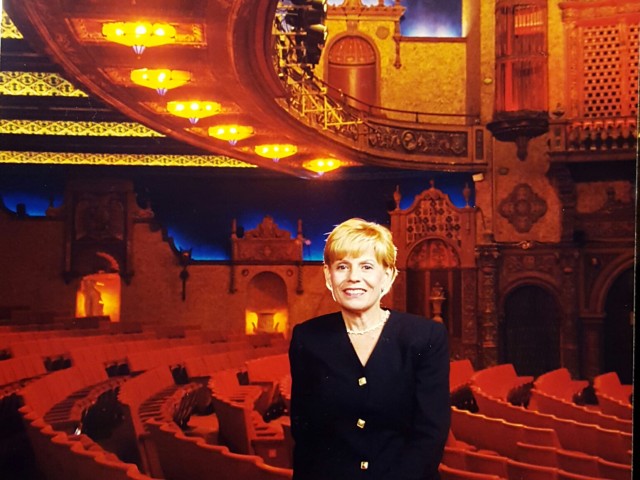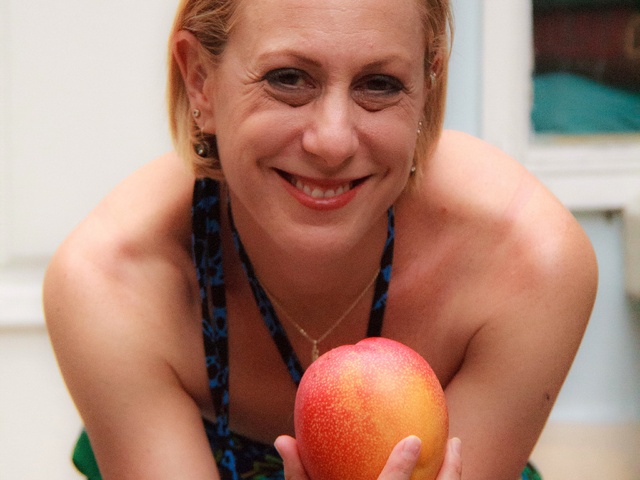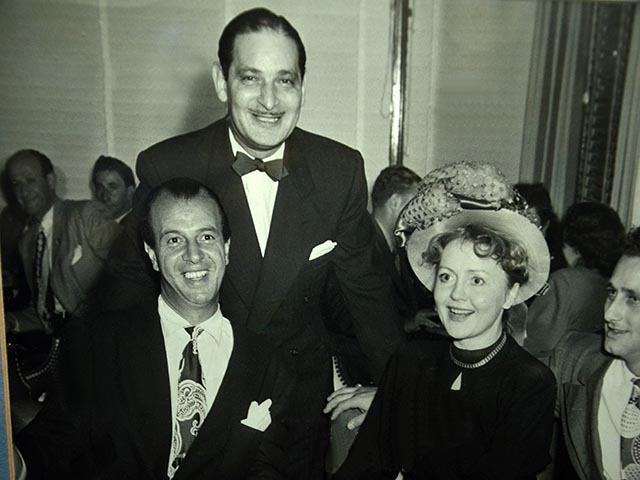My mother Myrtis Virgina Bell came to Miami in 1913, her birth year, from Polk County. Charles and Virginia Bell, my grandparents, worked in a phosphate mine there.
In Miami, they successfully built houses in the Shenandoah area. They had two more children, Jack and Donald, before they divorced, leaving the three children for Virginia to raise.
Charles retired after building projects like the Miami Shores Country Club. Virginia struggled through the roughest part of the Depression. She sold crystalized citrus peels, avocados, or anything she could think of to provide income.
Virginia never learned to drive. Charles taught my mother Myrtis to drive the family car. She would drive her father to work, and then drive her mother on her errands, and then drive back to pick up her father.
She died at 98 in 2011, having retired from the University of Miami at 65 with the last mechanical typewriter on campus.
My first memory of my baby sister, Joan, was on my third birthday. We were introduced in Victoria hospital; she was born on the same day as I.
I started school at Riverside Elementary. I loved the Norman Rockwell setting, and looked forward to school. We moved into our new house at the edge of the Everglades: Southwest 63rd Avenue and two blocks off Flagler Street. I enrolled in Kinloch Park School for the third grade. It was a complete change. Most of the boys didn’t have shoes and they all had to establish a pecking order over me.
There was one classmate who rode the same school bus and delighted in throwing me out of whichever seat I picked. I learned to escape to our small community and still look on the neighbors as extended family. Originally, it was a planned neighborhood, with cast-iron lampposts and sidewalks.
The noises at night were a lot different than city sounds. There was a winter home for the circus, a hit-and-miss motor supplied the power for pumping water to the few houses scattered in the neighborhood, and early Sunday morning, a big cast-iron bell on the top of West Flagler Baptist Church would start ringing, summoning everyone to church. The original building had a baptismal pool behind the pulpit where I was baptized. My best buddy, Bruce, married his wife there, with me as his best man.
My mother attended Shenandoah schools in town but graduated with the first class of the new Miami Senior High School. My sister and I attended Kinloch, Citrus Grove School and Miami High.
My dad James Posey Boyer with only one ear drum was 4-F (classified unfit to serve in WWII). But he went to work as a machinist, first in Trinidad and later in Cuba. He helped establish U.S. military bases there at the beginning of the war. He and my mom opened a sundry store on the ground floor of a Masonic hall on Northwest 15th Avenue and First Street.
The Orange Bowl Stadium was just down the street. As a kid, I worked there after the games, picking up empty glass Coke bottles, where I got five cents for each crate. Competing with other kids, you really had to hustle to earn two bucks.
As kids, we camped out and fished on Key Biscayne, and even built a driftwood shelter on Fair Island. We could ride the bus all the way to the jetties for 10 cents. There were hundreds of vacant places for beach parties. In the summer, some hotel rooms were a buck a night. A birch beer and hamburger at Royal Castle was only 15 cents.
My dad used to take the family to Old Cutler, break an oyster-filled branch off a mangrove bush, build a fire, and roast it until the oysters opened. He would get us up early, catch a few fish and cook them on an open fire, for breakfast on the beach. Fish was a large part of my family’s diet. I now realize it was readily available and cheap.
I had a paper route, and I used a chicken crate to carry the papers. I started at 52nd Avenue and Flagler and went north to the Tamiami canal, all the way to the Flagler Street Bridge and Milam Dairy Road with only 110 customers.
Every year we made a trip to Pompano to find a Christmas tree, imagining them standing upright, because all the short needle pines were bent over to the west from the constant wind off the beach. Several times during the war we heard about a ship being torpedoed and on fire, and we would go to the beach to watch.
I got my first bike at 9 and gave it away after high school, when I had to report for basic training. The USAF 435th was activated at the beginning of the Korean War. I dream about those times in early Miami, and for sure I lived through the greatest time in history, in the greatest town God ever created.
She died at 98 in 2011, having retired from the University of Miami, at 65 with the last mechanical typewriter on campus.
My first memory of my sister was on my third birthday, being introduced in Victoria hospital, to my baby sister, Joan born on the same day as I. I remember being taken across the street from our apartment, in 1935, to spend the night in a bigger building; because a storm was coming; and then sleeping through the whole thing.
I started school at Riverside Elementary. I loved the Norman Rockwell setting, and looked forward to school. We moved into our new house at the edge of the Everglades, Sixty-Third Avenue and two blocks off Flagler St. I enrolled in Kinloch Park School for the third grade. It was a complete change.
Most of the boys didn’t have shoes and they all had to establish a pecking order over me. A couple of the more infamous attending were the Cash brothers; and the one who made my life the most miserable was later known as Long John Fulford. He rode the same school bus and delighted in throwing me out of whichever seat I picked.
I learned to escape to our small community and to love our in their small houses, and still look on the neighbors as extended family. Originally, it was a planned neighborhood, with cast iron lampposts and sidewalks. They never paved the streets because of the crash in 1929.
The noises at night were a lot different than city sounds. There was a winter home for the circus, a hit-and-miss motor supplied the power for pumping water to the few houses scattered in the neighborhood, and early Sunday morning, a big cast iron bell on the top of West Flagler Baptist Church would start ringing, summoning everyone to church. The original building had a baptismal pool behind the pulpit where I was baptized pre-teen.
My best buddy Bruce married his wife there, with me as his best man. My mother, Myrtis Virgina Bell, attended Shenandoah School and High school in town but graduated with the first class of the new Miami Senior High School. My sister and I attended Kinloch, Citrus Grove School, and Miami High.
My dad, James Posey Boyer, (with only one ear drum), was 4-F; but he went to work as a machinist, first in Trinidad and later in Cuba. He helped establish US military bases there at the beginning of the war. He and my Mom opened a sundry store on the ground floor of a Masonic Hall on NW 15th Ave and 1st street.
The Orange Bowl Stadium was just down the street. As a kid I worked there after the games, picking up empty glass coke bottles, where I got 5 cents for each crate. Competing with other kids, you really had to hustle to earn 2 bucks.
As kids, we camped out and fished on Key Biscayne, and even built a driftwood shelter on Fair Island. We could ride the bus all the way to the Jetties for 10 cents. There were hundreds of vacant places for beach parties. In the summer some hotel rooms were a buck a night. A birch beer and hamburger, at Royal Castle, was only 15 cents.
My dad used to take the family to Old Cutler, break an oyster- filled branch off a mangrove bush, build a fire, and roast it until the oysters opened. He would get us up early, catch a few fish and cook them on an open fire, for breakfast on the beach. Fish was a large part of my family’s diet. I now realize it was readily available and cheap.
I had a paper route, and I used a chicken crate to carry the papers. I started at 52 Ave. and Flagler and went north to the Tamiami canal, all the way to the Flagler Street Bridge and Millan Dairy Road with only 110 costumers.
Every year we made a trip to Pompano to find a Christmas tree, imagining them standing upright, because all the short needle pines were bent over to the west from the constant wind off the beach. Several times during the war we heard about a ship being torpedoed and on fire, and we would go to the beach to watch.
I got my first bike at nine and gave it away after high school, when I had to report for basic training. The USAF 435th was activated at the beginning of the Korean War. I dream about those times in early Miami, and for sure I lived through the greatest time in history, in the greatest town God ever created.

